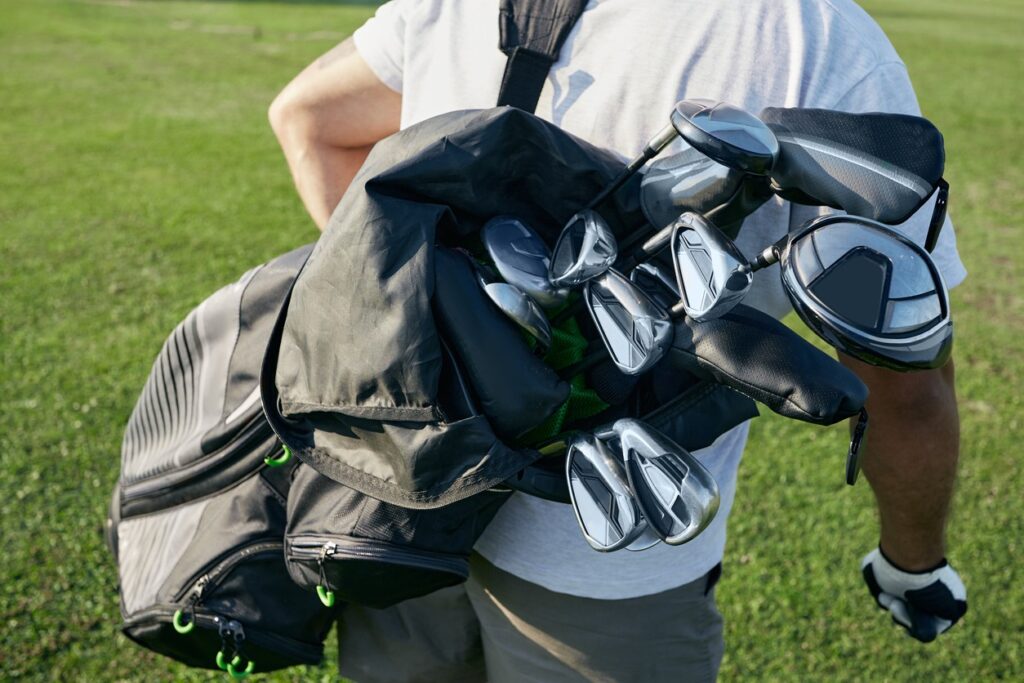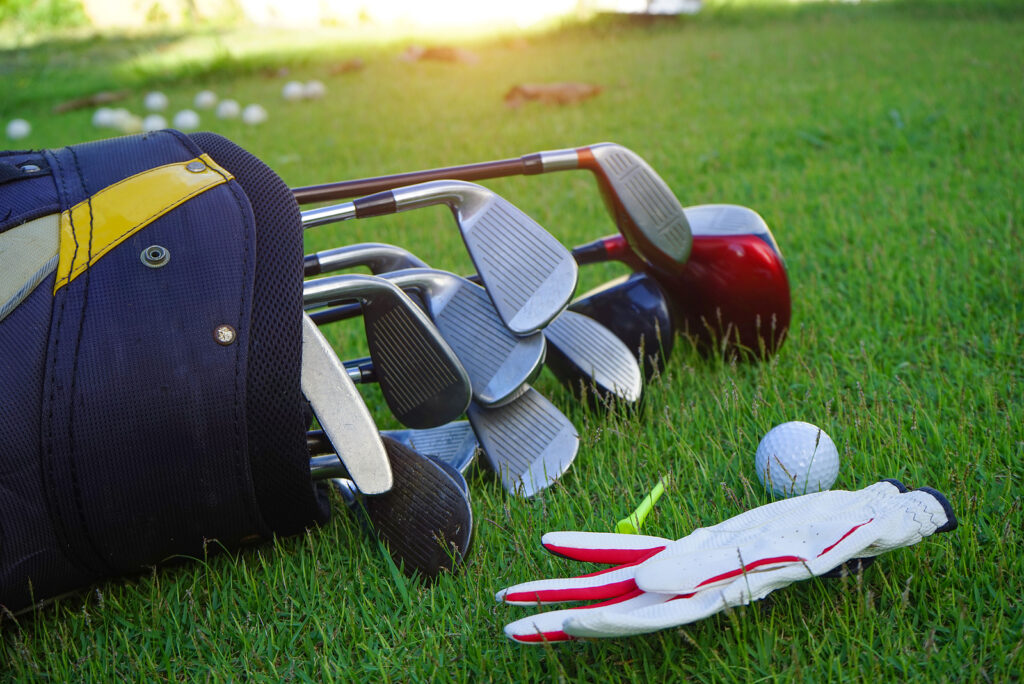For passionate golfers, the bond with a set of clubs can feel personal. Maybe you’ve had them since you first took up the game, or they’ve seen you through countless rounds and even a few personal bests. But like any tool, golf clubs have a lifespan. Using outdated or ill-suited equipment can hold back your performance and enjoyment on the course. If you’re wondering whether it’s time to invest in new clubs, this guide will help you identify the signs and navigate what to look for in a replacement.

Signs It’s Time to Replace Your Golf Clubs
1. Visible Wear and Tear: While some wear can be mitigated (e.g., replacing grips), extensive damage is often a sign that it’s time to upgrade.
- Worn Grips: If your grips are slick, cracked, or peeling, they can affect your ability to hold the club securely, leading to mishits.
- Dented Shafts: A bent or dented shaft affects the club‘s flex, potentially causing inconsistent ball flights.
- Face Damage: Irons and wedges can develop worn-out grooves, reducing spin and control. Drivers and woods might show cracks or dents, leading to a loss of distance and accuracy.
2. Outdated Technology: Golf technology evolves rapidly, and older clubs may lack features that improve playability. Modern drivers, for instance, offer adjustable weights and lofts, while newer irons have advanced materials for greater forgiveness and distance on the golf course. If your clubs are more than 5-10 years old, you might be missing out on innovations that could benefit your game.
3. Your Game Has Improved (or Changed)
- Skill Level: If you’ve progressed from a beginner to an intermediate or advanced player, your clubs might not match your needs. Beginners typically benefit from forgiving, game-improvement clubs, while experienced golfers may prefer clubs that offer greater control and shot-shaping ability.
- Swing Speed: A change in swing speed, whether from improved technique or age, can necessitate clubs with different shaft flex or weight.
4. Inconsistent Performance: If you’re struggling with consistency despite putting in the practice, your clubs might be the culprit. For example:
- A driver with the wrong loft could result in inconsistent distances.
- Irons that don’t fit your swing style might make it harder to strike the ball cleanly.
- Wedges with worn grooves won’t generate the spin you need around the greens.
5. Physical Growth or Changes: For younger golfers, a growing body might render old clubs with a shorter shaft poorly suited to their build. Even for adults, changes in height, flexibility, or strength could mean your clubs no longer fit your swing.
6. You Feel Disconnected From Your Equipment: Golf is as much about feel as it is about mechanics. If your clubs don’t inspire confidence or feel right in your hands, it’s harder to play your best. Trusting your equipment is essential for a strong mental game.
What to Look For in New Golf Clubs

Once you’ve decided to invest in new clubs, choosing the right ones can feel daunting. Here are some key considerations to ensure you pick a set that elevates your game.
1. Fit for Your Swing: Custom fitting is no longer reserved for professionals. A good fitter can help you find clubs that match your:
- Shaft Flex: Players with faster swing speeds typically need stiffer shafts, while those with slower speeds benefit from more flexible shafts.
- Lie Angle: Ensures the clubhead is properly aligned with the ground during impact.
- Length: Clubs that are too long or short can lead to poor posture and inconsistent ball striking.
2. Your Playing Style & Goals:
- Forgiveness vs. Workability: High-handicap golfers often benefit from game-improvement clubs, which are designed to be forgiving on mishits. Lower-handicap players might prefer blades or player’s irons for better control and feedback.
- Distance vs. Control: Modern drivers and irons often focus on maximizing distance, but be sure they don’t sacrifice accuracy if your game demands precision.
3. Club Set Composition: A modern set doesn’t have to include every traditional club. Many golfers are replacing long irons with hybrids, which are easier to hit. Assess your game and consider whether you need:
- A 3-wood or 5-wood
- One or more hybrids
- Specialty wedges (gap, sand, and lob wedges)
4. Material and Build Quality
- Drivers and Woods: Look for lightweight, durable materials like titanium or carbon composites that optimize distance and forgiveness.
- Irons and Wedges: Cavity-back irons provide forgiveness, while muscle-back irons (blades) offer control for skilled players.
- Putters: Face inserts and balance options can enhance feel and consistency on the greens.
5. Modern Features
- Adjustability: Many drivers and woods now feature adjustable weights and lofts to fine-tune performance.
- Improved Aerodynamics: Some clubs are designed to reduce drag and increase clubhead speed.
- Enhanced Forgiveness: Perimeter weighting and other technologies help minimize the impact of mishits.
6. Aesthetics and Feel
Golf is a game of confidence. Clubs that look and feel good in your hands can positively impact your mental game. Try different options to find what suits you best.
7. Budget
Golf clubs range widely in price. While premium models might offer cutting-edge technology, mid-range options often provide excellent value. Pre-owned clubs can also be a smart choice, especially if they’re recent models in good condition.
Additional Tips for Selecting New Clubs

- Test Before You Buy: Visit a golf store or driving range to try out different models. Many stores offer demo clubs or even simulator testing to assess how a club performs.
- Work with a Professional: A club fitter or teaching professional can provide invaluable insights into what will work best for your swing and goals.
- Prioritize Your Needs: If you can’t replace your entire set at once, focus on the clubs that will have the most impact. For example, a new driver or a set of wedges might make a bigger difference than upgrading your putter.
- Stay Open-Minded: While it’s tempting to stick with a familiar brand, other manufacturers might offer clubs better suited to your needs. Explore all options to ensure you’re getting the best fit.
Investing in new golf clubs is about more than just improving your score—it’s about enhancing your overall experience on the course. If your current clubs show signs of wear, don’t align with your swing, or simply don’t feel right, it’s worth exploring an upgrade. Modern clubs are packed with technology designed to make the game more enjoyable, whether you’re chasing your personal best or simply savoring a day on the links.
By identifying the signs that it’s time for a change and understanding what to look for in new equipment, you’ll be well-equipped to make a choice that suits your game, style, and goals. After all, golf is a game of precision and passion—your clubs should reflect that. Happy golfing!
